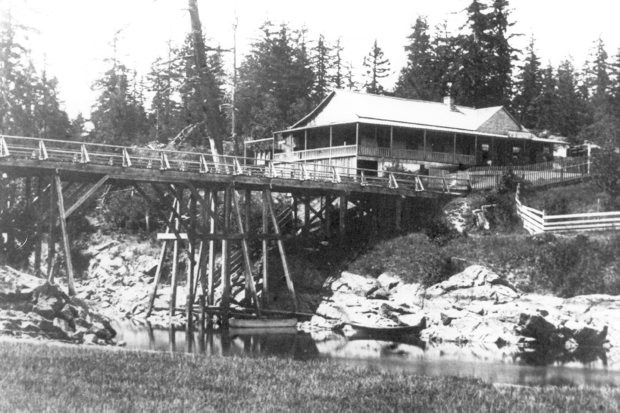Craigflower Country: An Illustrated History 1850-1960
By Maureen Duffus
Town and Gown Press, 198 pp., $22.95
This year marks the 100th anniversary of View Royal, the municipality Maureen Duffus describes as "an odd little piece of geography surrounded by four other municipalities and a lot of water."
Of course, View Royal - or Craigflower Country, as it was once known - is much younger than that, and much older.
There are First Nations middens along the shoreline up to 4,000 years old. The early inhabitants of the area apparently felt comfortable and safe there, because it was easy to defend against attack.
In the 1840s, the land came under the control of the Hudson's Bay Company, with Fort Victoria doctor John Sebastian Helmcken one of the first individual land purchasers. Helmcken soon was the largest landowner in today's View Royal.
Duffus, in this heavily revised edition of a book she published in 1993, tells of many of the earliest settlers, including the families of Helmcken, James Cooper and James Stewart.
Several farms were set up in the area. Perhaps the most famous was Craigflower Farm, established by the Puget's Sound Agricultural Company to supply meat, vegetables, dairy products and lumber to the Hudson's Bay fort at Victoria. There were minor problems, however; the rock and swamp was not conducive to efficient agricultural production.
The coves of View Royal were well-suited, however, for use by the Royal Navy, which set up its Pacific base in Esquimalt. Cole Island became a convenient ammunition depot.
As Duffus writes, two of the most well-known buildings in View Royal are the Four Mile House and the Six Mile House Hotel, which date to the 1850s and served as stopping places between Victoria and the farms to the west, or to the Cowichan Valley over the Malahat. Duffus traces the histories of both establishments.
And don't forget the railways: The Esquimalt and Nanaimo runs through View Royal, as did the Canadian National line, which is known today as the Galloping Goose recreational trail. These rail lines ensured that View Royal was well-connected to downtown Victoria - for a time, at least.
By 1912, Victoria was in the middle of an economic boom, and Esquimalt had been incorporated. That helped encourage the Island Investment Company, which had acquired much of the land in the old Craigflower area, to develop it into an community with summer homes and permanent residences.
The optimism of 1912 was wiped out by the downturn of 1913 and the start of the Great War in 1914, but through a series of booms and busts, the little community continued to grow.
It was incorporated in 1988, and is a proud part of the capital region today. While it has never been easy to point to a downtown core of View Royal, it provides solid links to our history, with the Craigflower farmhouse, proudly standing at the eastern entrance to the municipality, and the "mile houses" as three of the leading examples.
Duffus has extensively expanded and revised her original book, adding material that was not available the first time around, and drawing from more people and more sources. She tells the stories of many key elements of View Royal's history, and also deals with some of the prominent families who made it their home.
The book is richly illustrated with maps and photographs, and they help to weave a fascinating look at View Royal. It's not just a suburb; it's a vital part of Greater Victoria.
The reviewer, the editorial page editor of the Times Colonist, is the author of The Library Book: A History of Service to British Columbia.



